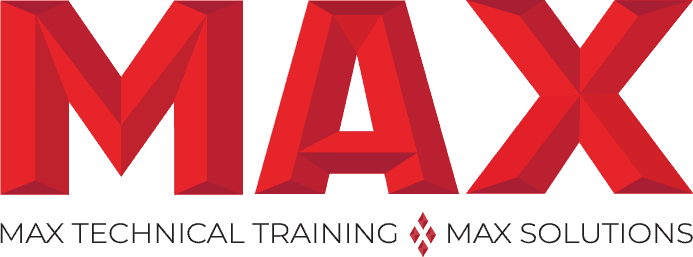
Maxtrain.com - info@maxtrain.com - 513-322-8888 - 866-595-6863
Advanced Contact Center Express Scripting Labs
Description
Advanced Contact Center Express Scripting Labs (ACCXSL) Introduction
Welcome to the Advanced Contact Center Express Scripting Labs (ACCXSL), a comprehensive 5-day training designed specifically for experienced Unified Contact Center Express (UCCX) administrators looking to deepen their scripting knowledge and enhance their operational expertise. This course serves as an essential step up from basic UCCX training, offering a deep dive into advanced scripting techniques and application development that are critical for managing complex contact center environments.
The ACCXSL course builds on your existing UCCX knowledge by revisiting the core functionalities and introducing the latest updates and enhancements to the system. The training kicks off with an in-depth review of the Unified CCX architecture, covering essential administration tasks and providing insights into the effective use of the Script Editor. As the course progresses, participants will engage in hands-on activities that explore the most sophisticated features of UCCX, enabling them to master complex scripting capabilities.
By the end of this advanced program, you will have acquired a robust set of skills that empower you to implement and manage intricate scripting solutions, ensuring your contact center operates at peak efficiency and delivers exceptional customer service. Whether you’re looking to optimize current processes or explore new technological capabilities, the ACCXSL course is your gateway to becoming a proficient UCCX script expert.
Advanced Contact Center Express Scripting Labs (ACCXSL) Objectives
By the end of the ACCXSL course, you will have accomplished a set of targeted objectives:
- Mastery of Unified CCX Architecture: Develop a profound understanding of the Unified CCX product architecture, its components, and the intricacies of call flow and administration.
- Advanced Scripting Skills: Gain expertise in utilizing the CCX Script Editor for creating, debugging, and testing complex script applications.
- Application Development Proficiency: Learn to develop key application tools vital for recording prompts, managing operational states, and handling diverse scenarios in contact centers.
- Complex Data Handling: Acquire skills in manipulating and presenting data effectively, including proficiency in managing dates, times, and multilingual script requirements.
- Help Desk Application Creation: Construct a fully-functional help desk application, integrating best practices and innovative contact center strategies.
- Finesse Desktop and Teams Management: Enhance your ability to work with Finesse Desktops and Teams, implementing practical solutions for contact center environments.
Prerequisites
- For an optimal learning experience, participants are expected to have completed the UCCXD course or have equivalent foundational knowledge.
- Additional field experience with UCCX is highly recommended to fully grasp the advanced concepts presented in this course.
Audience
ACCXSL is specifically designed for:
- Experienced Unified CCX engineers and administrators.
- Professionals responsible for building and maintaining complex contact center applications.
- Individuals who have a solid foundation in UCCX and seek to dive deeper into advanced features and scripting.
Advanced Contact Center Express Scripting Labs (ACCXSL) Course Outline
Overview
- Lesson 1: Review of Unified CCX Architecture, Components, Call Flow, Administration, Script Editor
- Lesson 2: New/Changed Features in Unified Contact Center Express
- Lesson 3: Provisioning an Application
- Lesson 4: Using the Script Editor
- Lesson 5: Creating a Basic Contact Center Application
CCX Application Development Tools and Techniques
- Lesson 1: Recording Prompts
- Lesson 2: Emergency/Status Recording
- Lesson 3: Creating Holiday Subflows
- Lesson 4: Creating Default Scripts
- Lesson 5: Manipulating and Speaking Data
- Lesson 6: Manipulating Dates and Times
- Lesson 7: Manipulating Languages
- Lesson 8: Creating Open and Closed State Scripts
Premium Applications
- Lesson 1: ASR/TTS Technology
- Lesson 2: XML Techniques
- Lesson 3: Java Objects
- Lesson 4: Using Auto Attendant
- Lesson 5: Outbound Preview Dialing
Example Optional Advanced Techniques
- Lesson 1: Using ASR/TTS in Script Applications
- Lesson 2: Using XML Techniques
LABS
Overview
- Lab 1-1 Provision Your First Application
- Lab 1-2 Using the CCX Script Editor
- Lab 1-3: Create a Basic Contact Center Application
Application Development Tools and Techniques
- Lab 2-1: Recording Prompts
- Lab 2-2: Add Emergency/Status Recordings
- Lab 2-3: Create Holiday Subflows
- Lab 2-4: Create Default Scripts
- Lab 2-5: Manipulate and Speak Data
- Lab 2-6: Manipulate Dates and Time
- Lab 2-7: Manipulate Languages
- Lab 2-8: Create Open/Closed State Script
Help Desk Labs
- Lab 3-1: Create a Help Desk Script
- Lab 3-2: Implement Best Contact Center Practices
- Lab 3-3: Implement Expected Wait Time
- Lab 3-4: Implement Position In Queue Techniques
- Lab 3-5: Implement Overflow Routing Techniques
Finesse Applications
- Lab 4-1: Manage Finesse Desktops, Teams
- Lab 4-2: Implementing Unified CM – Based MediaSense Call Recording
- Lab 4-3: Using Finesse 3rd Party Gadgets
- Lab 4-4: Configuring Finesse Web Chat and Agent Email
Caller Callback Techniques
- Lab 5-1: Implement Caller Callback – When Contact Center is Less Busy
- Lab 5-2: Implement Session Management and Finesse Call Variable Layouts for Callback
- Lab 5-3: Implement Caller Callback – Scheduled
- Lab 5-4: Implement Web-originated Callbacks
Additional Application Techniques
- Lab 7-1: Using ASR/TTS in Script Applications
- Lab 7-2: Implement XML Techniques
|
$4195.00
|
5 Days Course |




